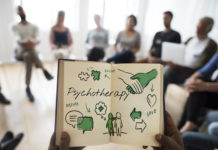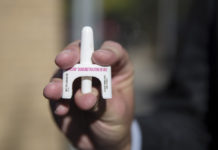WHAT IS DRUG REHAB?
Drug rehabilitation is the process of undergoing a treatment that can involve a combination of therapies and medications that can help people recover from an addiction. Drug rehabs are there to help people re-enter society without the need for drugs or alcohol. It is a way to achieve sobriety and improve their lives.
WHY IS DRUG REHAB ESSENTIAL?
Drug rehab is essential for people with substance use disorders because it not helps them overcome their addiction, but also decreases the probability of future relapses. In addition, for intravenous drug users, drug rehabs can be used as preventative measures to contracting infections that can be transmitted by shared needles and syringes, such as HIV or Hepatitis C. Many people dealing with substance use disorders turn to drug rehabs to help them reduce or eliminate withdrawal symptoms and cravings.
DOES DRUG REHAB WORK?
Every drug treatment program varies in their methods of helping people dealing with a substance use disorder. Drug and alcohol rehabilitation programs are meant to assist persons struggling with a substance use disorder on their path toward recovery.
WHAT TO EXPECT FROM DRUG REHAB
When patients enter a drug rehabilitation clinic, they may first be asked to complete some paperwork related to costs of the program. Some clinics are willing to work with state insurance programs, including Medicaid. Others offer to waive the costs of treatment under certain circumstances.
When that process finishes, the patient will see a doctor or a nurse for a proper evaluation. During that evaluation process, the medical professional will determine what type of treatment is needed and the estimated length of time the person needs to stay in the program.
While in a drug rehabilitation center, the length of a patient’s program is usually determined by how severe their addiction is. The duration of the drug rehab program is also influenced by whether they need to be treated with medicine, therapy or both. Most of the time, a medical professional will prescribe medication to treat the patient’s addiction and the withdrawals symptoms. Some treatment centers offer medication-assisted treatment (MAT) to help patients with opioid use disorders.
MAT involves treating patients using replacement medications that are approved by the U.S. Food and Drug Administration. Physicians will often prescribe methadone, buprenorphine or naltrexone to treat patients.
Some treatment centers utilize a variation of the 12-step program, created by Alcoholics Anonymous, which has been used as a model for many drug and alcohol treatment programs for many years.
Whichever drug rehab individuals choose, the focus will be on placing them into an environment that encourages healing and provides the support they need.
WHAT TO LOOK FOR IN DRUG REHAB
When looking for a drug rehab, people must make sure the addiction treatment center fits their specific needs. Every drug rehabilitation center is different and there are certain things to look for when choosing the right program.
TYPES OF DRUG REHAB
Currently, there are many addiction treatment options available for people to explore. Some range from drug detox, outpatient and inpatient services, MAT, and holistic recovery which can include counseling, physical, behavioral, and spiritual therapy alongside MAT. Any of these forms of addiction treatment may be combinable with additional support group services, including Alcoholics Anonymous, Narcotics Anonymous, Al-Anon and Nar-Anon (for family members of persons with alcohol or substance use disorders).
What is important to remember is that while patients are going through the process of addiction recovery, they are not alone. Physicians, family members and friends will have the chance to be there to direct and encourage the patients through different stages of the recovery.
There have been multiple efforts implemented by different states and by the federal government as well as the medical community to destigmatize the process of addiction treatment and make it easier for people in recovery to feel supported every step of the way.
Drug Detoxification
Drug detoxification is considered to be the first step in most drug rehabilitation programs. While some drug detox programs are offered within hospitals, others are available at standalone clinics. Drug detox is often combined with other forms of therapy and treatment methods.
Drug detox is a method of intervention, often supervised by medical professionals, to cleanse a patient’s body of alcohol or drugs. During this time, drug detox will help manage a patient’s withdrawal symptoms. It is important to note that drug detox does not represent a long-term solution to drug abuse. In cases where a patient is admitted into a hospital for intoxication, drug detox serves as an initial form of pain management on the path toward abstinence.
Most drug detox intake processes are similarly structured to one another. When patients first arrive at a treatment center, they most likely will receive an evaluation, go through a stabilization process, and then be at a stage in which they can continue rehabilitation treatment as part of the recovery process.
First, clinicians will work with a patient during an initial intake evaluation. During this time, clinicians will examine them to determine what is the best form of treatment. They will give them blood tests to narrow down what substance or substances are currently in the body. In addition, clinicians will evaluate them to see if they have a co-occurring behavioral or physical disorders that may affect their substance use disorder or its subsequent treatment.
Second, the process of drug detox will be explained in depth to the patients, to give them an idea of the exact type of treatment they will receive and how it might affect them. During this stage, a patient may or may not be prescribed medications to ease withdrawal symptoms. Family members may be brought in to show support or help prepare the patients for the recovery phase.
Third, the final phase prepares people to enter into a treatment program. While drug detox helps alleviate the physical aspects of a drug addiction, additional treatment is necessary in order to address the behavioral and psychological aspects of the dependence. Follow-up treatment may also help prevent relapses into drug use. Although there are different treatment approaches depending on the particular substance involved, most likely some form of medication will be used to treat their substance use disorders.
Outpatient Rehab
Outpatient rehab consists of different forms of behavioral therapy, sometimes combined with prescribed medication to help people with withdrawal or pain symptoms. When a patient attends an outpatient clinic, they’ll initially be assessed by a medical professional who will then determine the most appropriate treatment option.
If recommended outpatient rehabilitation, patients will be required to check in regularly with their designated clinician or clinic. During these appointments, they may have to regularly submit drug tests, receive prescription medications and participate in additional counseling or therapy services, such as cognitive-behavioral therapy, family therapy, and contingency management. If other services seem cost prohibitive or do not work around a person’s busy schedule, outpatient rehabilitation may be the most viable option available. Some physicians may recommend intensive outpatient treatment—which requires more sessions and provides resources, including psychoeducational courses, and additional continuing care, such as support groups.
Inpatient Rehab
Inpatient rehab is generally a longer process that involves a patient being admitted into a hospital or residential clinic. The type of stay depends on the kind of treatment being administered. A patient who needs inpatient rehabilitation generally has a more severe form of substance use disorder. While in inpatient rehab, clinicians supervise a patient’s substance use disorder treatment.
Many inpatient drug treatment centers have a variable length of stay depending on the type and severity of addiction a patient has. A majority of inpatient addiction treatment centers will allow a patient to stay between 30 and 90 days, depending on their needs. In special cases, some drug addiction treatment centers will allow a patient to stay longer than 90 days, potentially up to a year.
Medication-Assisted Treatment
MAT is a route to specifically treat opioid use disorders with medications that specifically address how the addictive qualities of opioid-based drugs affect a patient’s body and brain chemistry. Many government officials and medical professionals believe that MAT is the most effective treatment form for opioid use disorders, especially when combined with other forms of therapy, such as cognitive-behavioral therapy.
To treat the effects of opioid use disorders, medications such as buprenorphine, naltrexone, and methadone are most commonly used.
Buprenorphine
Buprenorphine is one of the most popular medications to use to treat opioid use disorders.
Buprenorphine acts to suppress the urges associated with an opioid addiction to lower cravings and potential chances of relapse. It lowers dependence on opioids and dampens the high a patient feels. It also places a ceiling on the withdrawal effects of opioids and how they affect a patient. It also finds a way to block other opioids and their effects.
Naltrexone
Naltrexone treats alcohol dependence, reduces the effects of opioids and prevents a relapse. It needs to be an isolated medication and cannot be combined with other drugs or pain medication.
Naltrexone works to block the effects that drugs have on the body. While buprenorphine activates the brain receptors, naltrexone does the reverse, completely blocking the receptors in the brain.
Methadone
Methadone alters the way a patient’s brain and nervous system react to pain by manipulating the brain into believing it is still receiving the drug that fuels the person’s addiction. Additionally, it relieves withdrawal symptoms from opioids.
Compared to other medications to reverse opioid dependence, methadone works at a slower pace. Methadone has generated some controversy, since it is an synthetic opioid-based medication with highly addictive qualities. It can potentially be misused if not monitored carefully.
Holistic Recovery
Holistic recovery is an alternative form of treatment that does not employ traditional medications. Holistic recovery can include numerous forms of treatment including: acupuncture or acupressure, massages, yoga, meditation, herbal medicines, reiki and other forms of energy work and nutritional therapy.
Holistic recovery focuses on the factors that led to addiction. It usually centers on the physical symptoms of the drug addiction and the withdrawals associated with it. Holistic recovery also targets the emotional instability that can lead to substance use disorder. Holistic recovery deals with factors that lead to substance abuse addiction and some of these aspects include unhealthy eating habits.
Holistic therapists should be highly qualified and be able to promote behavioral changes among their patients. Many holistic recovery programs approach treatment from a whole-body perspective. The best holistic recovery programs will follow up with the patients after the treatment is complete to ensure that they stay on course in their recovery. They usually apply plans and programs after the fact that they have learned from holistic healing and behavioral therapy.
Cognitive Behavioral Therapy
Cognitive Behavioral Therapy (CBT) is an element of psychotherapy centered on helping patients understand how a person’s learned behaviors, beliefs and thoughts influence current problems. CBT, unlike psychoanalysis, focuses primarily on current issues rather than a patient’s past. Psychotherapists utilize a problem-solving approach with clients in order to present possible solutions, while also introducing stress relief approaches and other therapeutic suggestions. The main function of this type of therapy in helping persons with substance use disorders is helping them understand that their particular addictions is based off their thoughts or beliefs.
Motivational Enhancement Therapy
Motivational Enhancement Therapy (MET) is a form of therapy that uses motivational tactics to help people overcome their addictions. The first steps usually involve an initial battery assessment of the person and is followed up by several therapeutic sessions.
MET focuses on creating a plan to change a person’s life. Strategies for coping are usually addressed with the patient. In many instances, patients will be encouraging to invite their significant others to participate in sessions.
Systematic Desensitization
Systematic desensitization focuses on treating phobias associated with addiction. Sometimes, people will undergo practices such as breathing techniques and relaxation exercises. Most patients will be asked to rank their top fears and then their therapist will work with them to conquer each fear one at a time. After a fear is conquered, the therapist will expose their patient to their subsequent fear in small doses until they reach address their greatest fear.
Aversion Therapy
Aversion therapy is another form of treatment that is used on drug abuse and alcohol. The way it works is that it teaches people to turn something that would originally be desirable to them into something that represents an unhealthy stimulus. This, in turn, associates the unhealthy stimulant with something that is also uncomfortable and unpleasant.
Electronic Therapy
Some facilities have begun using certain forms of electronic therapy. Drug addiction treatment centers employ the NSS-2 Bridge, which is an electronic nerve field stimulator. What this device is meant to do is to limit opioid and heroin withdrawals. This device has been applied in a few treatment centers in the country and is still awaiting approval to be added to more facilities.
DRUG REHAB COSTS
Drug rehab costs can vary depending on which addiction treatment center is chosen. Many treatment centers allow Medicaid or Medicare to cover the treatment costs. Other addiction treatment centers allow state or federal funding to help pay for the costs of each treatment. Private insurance also is used to pay for costs of rehabilitation as well as military insurance.
[CONCLUSION]
Finding the right treatment center for an addiction does not have to be a challenge. It is often a matter of what will work best for each person. The most important thing to consider when selecting a treatment center is which facility will match each person’s needs the most. Seeking treatment is one of the most important decisions a person struggling with substance use disorder will make in their lives and the one that will determine where they go in the future. Whichever addiction treatment center a person chooses should be the one that sets them on the healthiest path for the rest of their lives.














